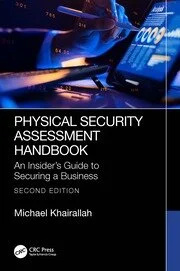NIST Develops New Standards to Improve Metal-Detector Testing

For testing the detection of small-sized threats such as blades and keys, the team found that steel spheres about the size of a peppercorn (5 millimeters in diameter) were very effective for testing the performance of HHMDs and HWMDs.
Photo courtesy of NIST

Metal detectors serve as portals to correctional facilities, prisons and courthouses, and security officers often wave the hand-held models around the bags of incoming ticketholders at sports arenas, too.
Photo courtesy of NIST

Metal detectors now appear routinely in the entrances of many schools, airports and even houses of worship. They serve as portals to correctional facilities, prisons and courthouses, and security officers often wave the hand-held models around the bags of incoming ticketholders at sports arenas, too. The increased usage is making it more important than ever to know that these machines will always work as expected and can be counted upon to help detect weapons and other threats. To help meet these demands, scientists at the National Institute of Standards and Technology (NIST) have researched and developed four metal detection testing standards. Three have been published by the ASTM International standards organization and a fourth one is still in development.
This is the first time that product conformity standards have been created for these machines. In addition to increasing confidence, the standards will shorten the time needed for testing new products, which will likely bring down costs for users.
“We were able to reduce the time required for exhaustive walk-through metal detector testing from almost 9,000 hours to just 66 hours by eliminating redundant and often unnecessary procedures,” says Nick Paulter, whose research group at NIST conducted the work.
The standard currently under development relates to walk-through metal detectors (WTMDs). WTMDs are mainstays of checkpoint areas all over the world, and for the most part their detection results are very repeatable and reproducible. They work by generating an alternating magnetic field that is altered when a metal passes through its portal. WTMDs are tested by noting when metal objects trigger an alarm.
In the past, humans were used as “clean testers” for WTMDs; people who were not wearing metal-rimmed glasses, metal belt buckles, an underwire bra or any zippers and did not have metallic medical implants were often employed as decoys in metal detector lab tests.
Humans, however, have a hard time being truly consistent with their movements. It proved almost impossible to ensure that a clean tester would walk through a WTMD the same exact way, on the same exact path, making the same exact actions each time. Large numbers of test runs had to be made to offset the variables and uncertainty, which was expensive.
Over time, refrigerator-sized robots were increasingly used as an alternative to human clean testers. The robots were designed to pass test objects through a WTMD in a uniform manner, always following the exact same straight path. While the robots provided predictability and reliability, they did not reproduce the real-life movements that human beings make when moving from point A to point B.
To compensate, some testing entities used robots that emulated human movement with different speeds and different pathways or trajectories. Some testers also oriented the test objects in numerous ways to try to anticipate all possible smuggling scenarios. This caused robotic testing of metal detectors to become almost as time-intensive and expensive as the use of human testers.
Efforts to Standardize Testing
Paulter and his team explored a series of questions related to the WTMDs. Does the manner of movement through the machine matter? Do different types of objects also need to be tested? They wanted to standardize testing so that all manufacturers and users could get comparable data.
“What we learned is that there are many variables when it comes to human movement in a metal detector,” says Paulter.
“If someone is tall or short, heavy or slight in build – whether they move fast or slow – all of these can make a huge difference,” he says. “People also tend to walk in different paths as they move through these machines. And the data showed that these variables can change the alarm signal.”
Additional NIST work revealed that robot testers only needed to travel one path, but should ideally include six different objects, moving at one consistent speed. Additionally, it was only necessary to use one orientation for each of those objects. Together, these parameters could determine if the detectors met baseline standards for performance.
The same research team also helped to create two documentary performance specification and test method standards, one for hand-held metal detectors (HHMDs), which can look like a wand, and another for hand-worn metal detectors (HWMDs), which are worn like a glove by a security agent. HHMDs are usually waved around the body of the person being searched, whereas the HWMDs are often in contact with the person being searched.
In some of the common HHMD and HWMD tests, fake knives or fake guns would be placed on clean testers. Other times, these fake objects were put into bags that would be scanned with the detectors.
Over time, however, inaccuracies became apparent. Partly, this was due to the simple magnetic field used by HHMDs and HWMDs. If an object was turned even five degrees away from the detector, it could become undetectable. This was especially the case for thin objects such as razor blades. Razors, keys and other small pieces of metal are a particularly important issue at correctional facilities, where inmates have been known to try to smuggle them by mouth to make weapons or to unlock cells and storage areas.
The team quickly realized that even the larger abstract exemplars often used in testing – fake guns, dull blades and block-shaped knives – were problematic due to variations in their shape and orientation when scanned by the metal detector. Instead, the researchers realized, testing of HHMDs and HWMDs should be done with an object of consistent shape and size.
They also needed an object whose orientation or position would not affect the response of the detector.
Paulter had to rule out some objects, realistic as they might be, such as a knifelike piece of metal. In real life, a HWMD or HHMD would be waved multiple times over a person and be held at varying angles and would likely detect a knife-shaped object. However, during the testing process, it may not sound the alarm if only the thinnest razor’s edge is perpendicular to the detector. A company might accidentally (or intentionally) game the system by only having the thinnest metallic edge at the perpendicular angle. Testing would not be accurate or reproducible.
An Unexpected Winner
Surprisingly, spheres were the winning choice.
“Although they don’t look at all like real weapons, they help us get consistent readings on the detectors,” says Paulter. “So long as we know a performance baseline for each kind of metal threat a hand-held detector might encounter, we can reliably determine how that detector will respond when used.”
Steel alloys, Paulter points out, are relatively easy to detect due to their magnetic and electrical properties. Other alloys such as aluminum and brass pose a bit more of a challenge because they are nonmagnetic and therefore harder to detect.
For testing the detection of small-sized threats such as blades and keys, the team found that steel spheres about the size of a peppercorn (5 millimeters in diameter) were very effective for testing the performance of HHMDs and HWMDs. For aluminum and brass and other nonmagnetic alloys, the team found that an aluminum sphere about the size of large cherry or gumball (about 8 mm in diameter) worked best.
For testing the detection of large-sized threat objects such as guns and bombs, Paulter’s team found that testing could be done with a steel sphere about the size of a ping-pong ball (45 mm in diameter) or an aluminum sphere about the size of a tennis ball (70 mm in diameter).
Spheres are especially good, Paulter adds, because they don’t pose the same security problems that a fake gun, knife or blade might in a lab setting. Moreover, in a correctional facility where metal detectors are routinely tested to ensure their proper operation, spherical test objects cannot be readily fashioned into actual weapons by inmates if stolen.
As a result of this work, ASTM has approved an updated set of international metal detector standards, including ASTM F3020 - 19a, F3278 - 19a and F3356 - 19a.
This article originally appeared on the NIST website https://www.nist.gov/news-events/news/2019/11/nist-develops-new-standards-improve-metal-detector-testing
Looking for a reprint of this article?
From high-res PDFs to custom plaques, order your copy today!






